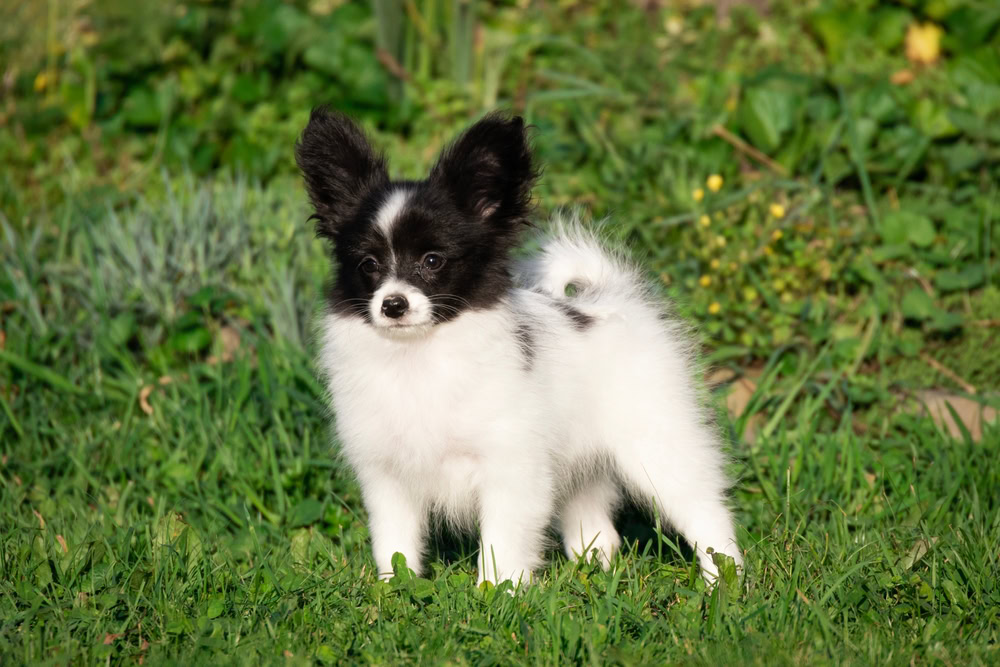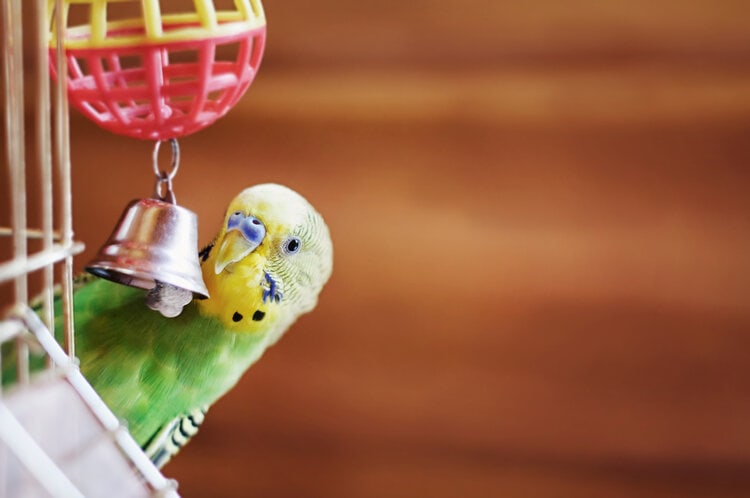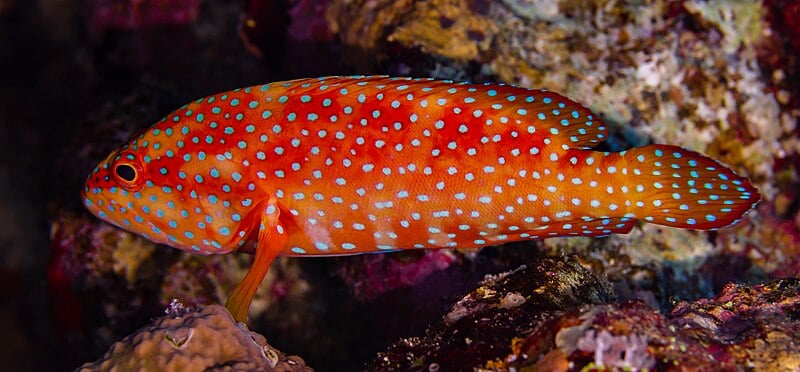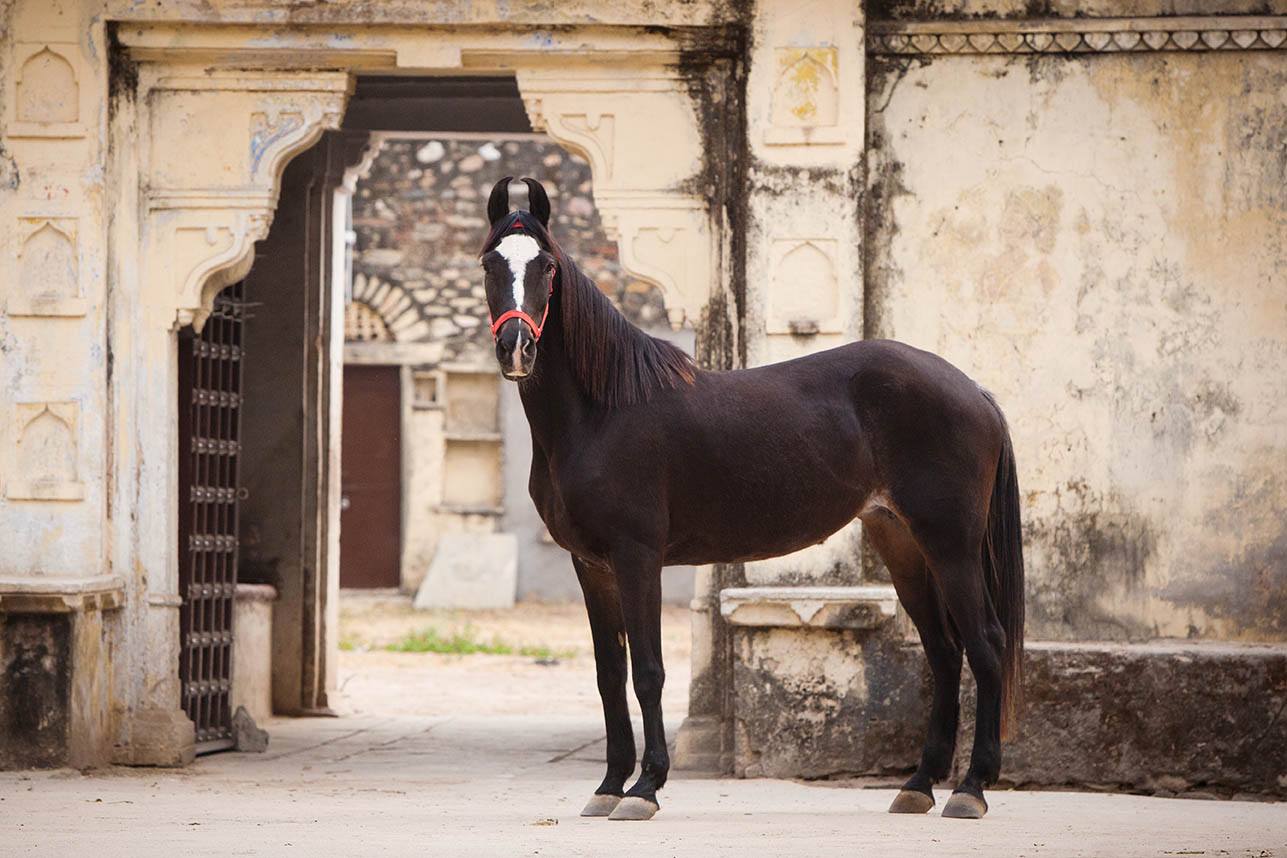VET APPROVED

The information is current and up-to-date in accordance with the latest veterinarian research.
Learn more »Click Below to Skip Ahead
Over thousands of years, dogs adapted and evolved to be better suited to a life lived alongside humans. Eventually, we humans began to manipulate our canine companions, breeding dogs with different features and qualities, resulting in the vast array of dog breeds we know today. Having spent hundreds of years creating these breeds, we are now exploring the fascinating world of crossbreeds or hybrids, combining two distinct breeds in one ‘designer’ dog breed.
Although these designer dogs are not formally recognized by the American Kennel Club, they are becoming more and more popular, sometimes even fetching more money than the parent breeds themselves! All the more so if we can attach an adorable name to these creations, like the Chion. This pint-sized hybrid is the product of the tiny Papillon, and the even tinier Chihuahua.
Breed Overview
Height:
17 – 22 inches
Weight:
35 – 60 pounds
Lifespan:
10 – 14 years
Colors:
Fawn, sable, or grey with brown, black, or white
Suitable for:
Active owners, being a working dog, families
Temperament:
Intelligent, versatile, loyal, affectionate, playful, protective
The challenge with predicting the physical and behavioral traits of a designer breed is that we can never guarantee which traits will or won’t be passed on from the parents. Additionally, these traits will often vary depending on whether this is a first generation or F1 cross (from a Chihuahua and a Papillon) or a second, third, or fourth generation pup, with Chion parents, grandparents, even great-grandparents.
If you’re considering adopting a Chion, the best thing to do is to learn about both breeds involved; the good and the bad.
In the case of the Chion, both contributing breeds share many of the same characteristics, making these dogs less of an unknown quantity than some other dog combinations.
Chion Characteristics
Chion Puppies
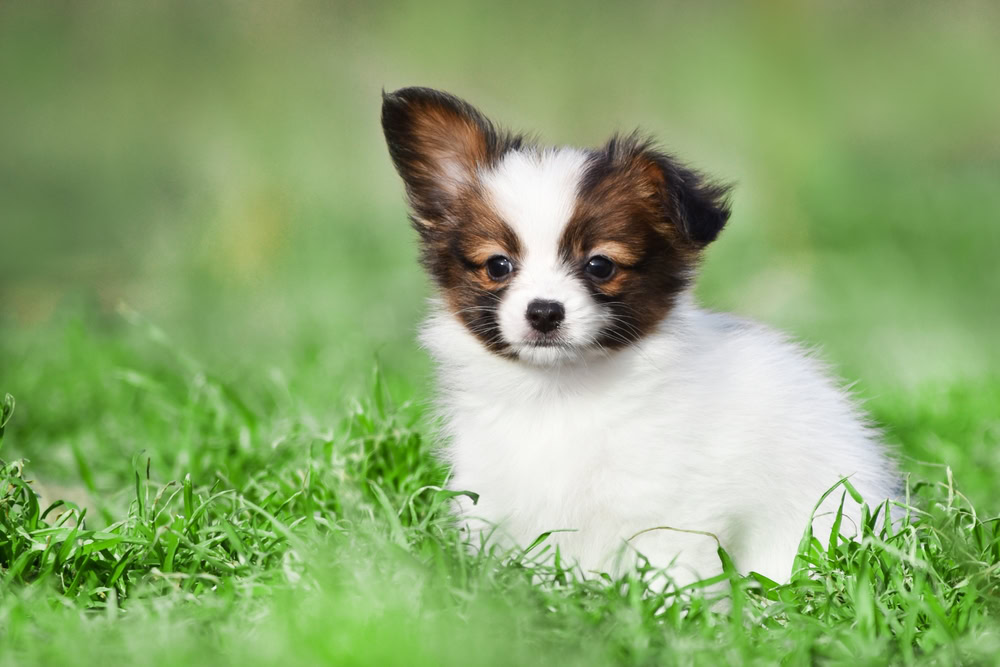
If you are looking to adopt a Chion puppy, the most important step is to do your research. Being able to see and meet a prospective pup’s parents is a good sign, and a breeder should be able to provide you with evidence of any vaccinations and worming of the parents, and of the pups if applicable. The second thing you should do, before bringing your puppy home, is take out pet insurance to ensure you can get them the best possible treatment should disaster strike—don’t wait for an accident or illness to occur before getting insurance in place.
Being the product of two of the smallest dog breeds, you can probably imagine that Chion puppies are going to be pretty tiny as well. Because the Papillon is a little larger than the Chihuahua, Chions tend to be somewhere in between, which is still pretty small!
Because of their small size and relatively large skulls, Chihuahuas in particular are known for having an open fontanelle or ‘soft spot’ at the top of their head, toward the back, and Chion pups may have the same. This will usually close over by the time they are 3-4 months old, but in the meantime, it’s important to be very careful when handling them, and stop them from getting into too much mischief or rough play that might result in head trauma.
Just because they are small, it doesn’t mean your Chion should miss out on the essential steps of socialization and training—they are still dogs. One of the toughest obstacles when training tiny dogs, particularly the Chihuahua, is toilet training; they are notoriously challenging.
Chion Potty Training
We all know that positive reinforcement is the best and most effective form of training, and rewarding and praising our dogs when they go potty outside is an easy thing to do. For larger dogs, it’s usually easy to notice that they are about to or are toileting indoors, allowing you to interrupt them and take them outside. With very small dogs, inside accidents are often not witnessed, so the opportunity to interrupt them and relocate them outside is usually missed. The result is that they get a positive reaction to toileting outside and a neutral one to going indoors, so training can take some time.
Some owners overcome this problem by installing a cat flap to allow their dog to go outside whenever they want, but this isn’t really potty training. They aren’t learning to wait to be taken or let outside, so if that doggy door is closed for any reason, they haven’t learned to signal to you to let them out.
Male Chihuahuas also have a reputation for territorial urine marking, which doesn’t always go away with neutering. Additionally, these dogs are very sensitive creatures, and even a raised voice will send them into hiding. Although punishment is never recommended for toilet training, a loud “No!” or “Stop!” with a clap is usually an effective way to interrupt an indoor poop or pee, giving you a chance to take them outside. If you shout at a Chion, be prepared to be avoided or ignored for several days.
The conclusion? If you take on a tiny dog like the Chion, you must be prepared to have some patience when it comes to getting them housetrained. Consider yourself warned!
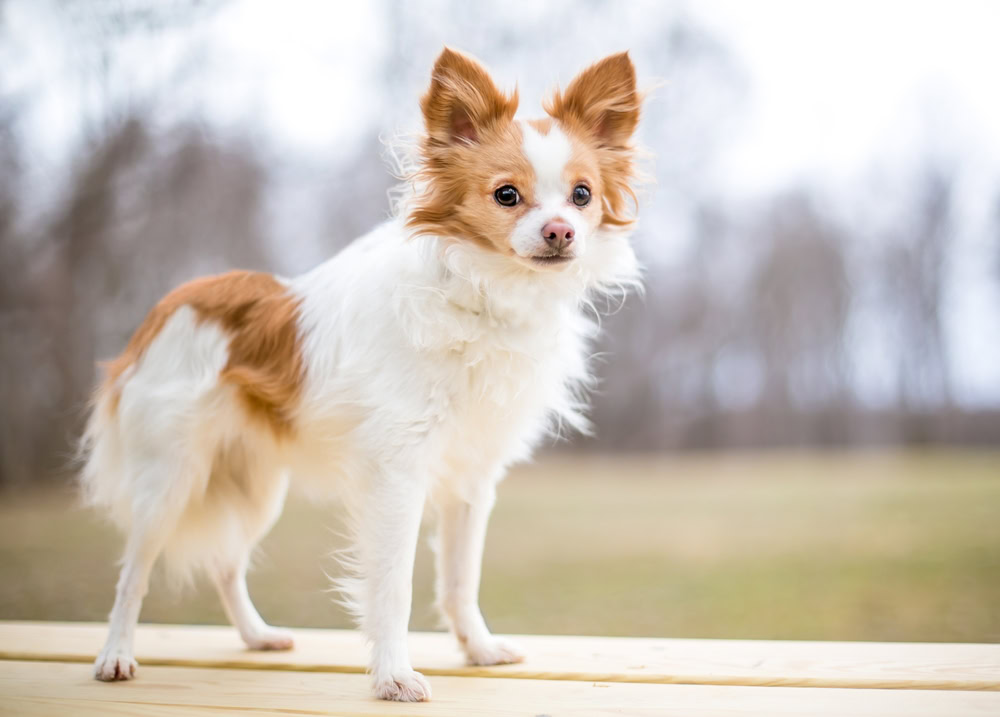

Temperament & Intelligence of the Chion 🧠
Once you’ve got past the problematic potty training, you’ll be rewarded with a companion who is loving, entertaining, playful, and affectionate. They love to play, and tend to have bursts of energy interspersed with long naps.
These little dogs are often mislabelled as being of low intelligence, largely due to their reluctance to always follow orders. However, the Chion is actually quite intelligent, and very capable of learning tricks, agility, and obedience. However, they are also masters of manipulation, and very adept at training their owners to do their bidding. What is often confused as a lack of intelligence, is usually a lack of willingness to obey!
Are Chions Good for Families? 🏡
Because of their small size, young children or those who love rough play are not always the best companions for the Chion, but in general, they are loving family dogs. They do tend to gravitate towards one individual, but are easily tempted by a treat or warm lap.
Small dogs can become a bit snappy if not handled confidently from a young age, because everything is larger than they are, and therefore seen as a potential threat. It’s important to give the Chion lots of socialization, expose them to different situations, and allow them to be (carefully) handled by different people. If not, they can become defensive and reluctant to move away from their designated person.
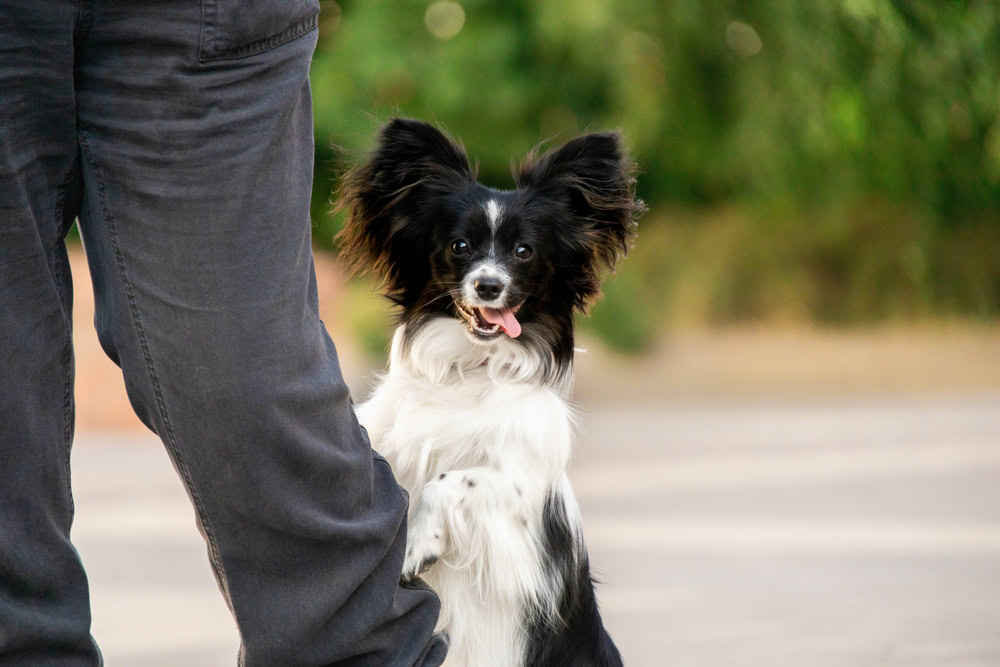
Does the Chion Get Along With Other Pets? 🐶 😽
They do. Most of the time, the smallest dog will come in and rule the roost, something that larger dogs seem to accept without question. However, if you have particularly dominant dogs, there could be conflict, so introductions should always be closely supervised.
As a general rule, females get on better with males and vice versa, rather than with dogs of the same sex. This is particularly true if they are not spayed/neutered.
Cats are often quite willing to befriend a Chion, but may be easily irritated or chased off by a particularly bouncy, yappy dog. When introducing cats to your Chion, it’s a good idea to trim their claws first as a precaution.

Things to Know When Owning a Chion
Despite their size, the Chion tends to be a relatively robust and low maintenance breed, with just a few considerations to keep in mind.
Food & Diet Requirements 🦴
As with any dog, a high-quality, nutritionally balanced diet is what these dogs need. Puppies need to eat a diet formulated for their life stage until they are at least 8-10 months old, at which point they can be gradually moved onto adult food.
These little dogs won’t be eating you out of house and home, which means that you can afford to splurge on some top quality food. Freshly prepared, human grade diets are becoming more and more popular, with good reason. Although they can be quite expensive, they are much more affordable when you’re feeding a dog as small as a Chion, and many are suitable for puppies that have been weaned.
The Chion can be predisposed to dental problems, so be sure to provide them with dental chews, large size kibble to crunch, and introduce them to brushing when they are young.
Exercise 🐕
The small size of the Chion means that they can get a lot done in a relatively small space, and they don’t need long hikes to meet their exercise requirements. However, that doesn’t mean that you shouldn’t take them out! Like all dogs, they will love to explore, smell new smells, see new sights, and meet new dogs. They are fast, so make sure you have perfected your recall before letting them off a leash, or keep them on to be extra safe.
The Chion can become a bit lazy, putting it at higher risk for obesity and heart disease, so make sure they have a regular exercise routine.
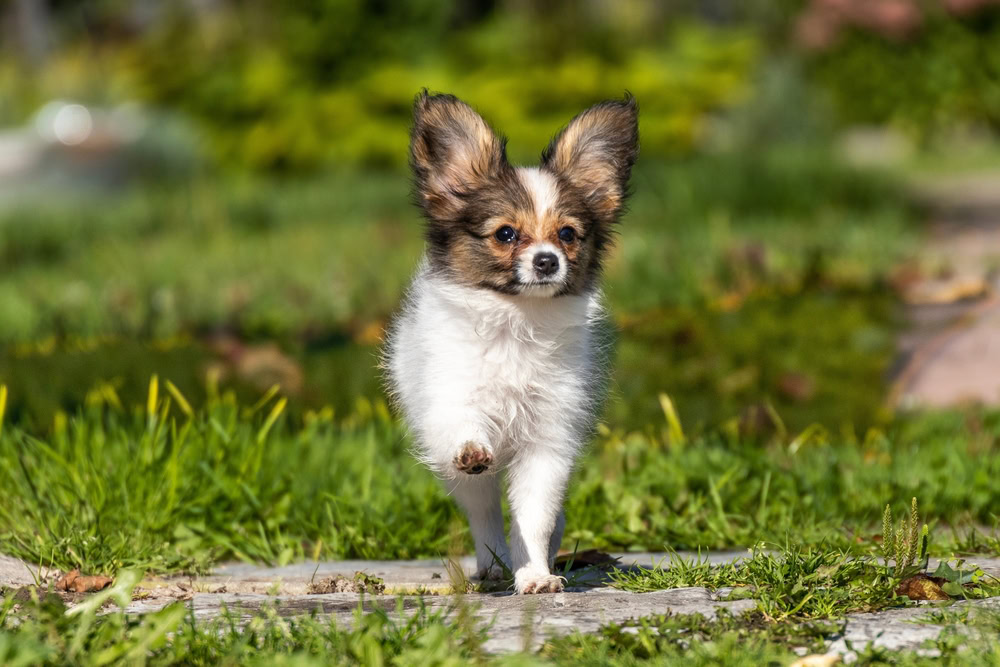
Training 🦮
As we mentioned above, the Chion is intelligent but notoriously challenging when it comes to toilet training, but don’t let that put you off. They can, and will, respond to positive reinforcement, and being consistent and persistent will win in the end. And in the worst case scenario, at least their accidents tend to be small ones.
The Chion loves to please, and can be taught tricks, commands, games, and even to run an agility course. They can also be willful little hooligans, so you’ll need to stay on top of your game to make sure they don’t run wild!
Grooming ✂️
Depending on whether your Chion comes from a short or longhair Chihuahua, your dog may have a relatively short coat with some wispy fur around the ears, tail, and trousers, or they may have a long coat all over. They don’t shed a lot, but the longer hair will easily become knotted if not given a comb daily.
The low-shedding coat of the Schnoodle will benefit from a session with a detangling comb and dry shampoo 2-3 times a week, to make sure their coat stays free from knots.
Being light on their feet, the Chion will likely need a regular nail trim, so get them used to having those toes handled from a young age.
The Chion’s eyes may be quite protuberant, depending on the parents, and may need a wipe each day to clean up tear overflow.
Health and Conditions ❤️
- Corneal ulcers
- Patella luxation (mobile kneecaps)
- Dental disease
- Open fontanelle (small)
- Seizure disorders
- Heart disease
- Open fontanelle (large)

Male vs Female
As a smaller breed, there aren’t any major differences between the male and female Chion, though the male may be a little taller and stockier.
Chion males may suffer from cryptorchidism, which is where one or both testes do not descend into the scrotum, and are instead retained inside the abdomen or in the groin. This is a very heritable trait, and dogs with cryptorchidism should not be bred from, and should be castrated to avoid problems with the retained testes. Males can be castrated any time after they reach 6 months old, but ideally at around 8-10 months to allow them to reach sexual maturity. Castration will help reduce scent marking, and make them less likely to try and pick fights with larger dogs.
The recommended timing of spaying non-breeding females varies depending on breed. Some research suggests that the best time to spay is before their first season, once they are over 6 months old, as this minimizes their risk of developing mammary cell tumors. Others recommend performing the surgery between their first and second seasons, ensuring they have reached sexual maturity, whilst still keeping the risks of mammary tumors very low.
Ultimately, the decision about if and when to spay or neuter your dog is best discussed with your veterinarian.


3 Little-Known Facts About the Chion
1. The Chion name is spelled for English pronunciation.
You might be wondering why they aren’t called a Chillon. That’s because even spelled this way, the pronunciation is the same, as the Papillon is pronounced “pappyon” – French for butterfly.
2. The Chion’s parent breeds have Royal fans throughout history.
An early admirer of the Papillon was the ill-fated Marie Antoinette. Fortunately, her dog, Thisbe, was spared the guillotine that ended her master’s life. Images of Thisbe depict a dog that looks more like a Chion than a Papillon.
3. Chions can be known by many names.
Although generally known as the Chion, you may also see this little dog referred to as a Pap-Chi, Chi-A-Pap, and Papihuahua, Pap-Wa, and Chi-Pap.
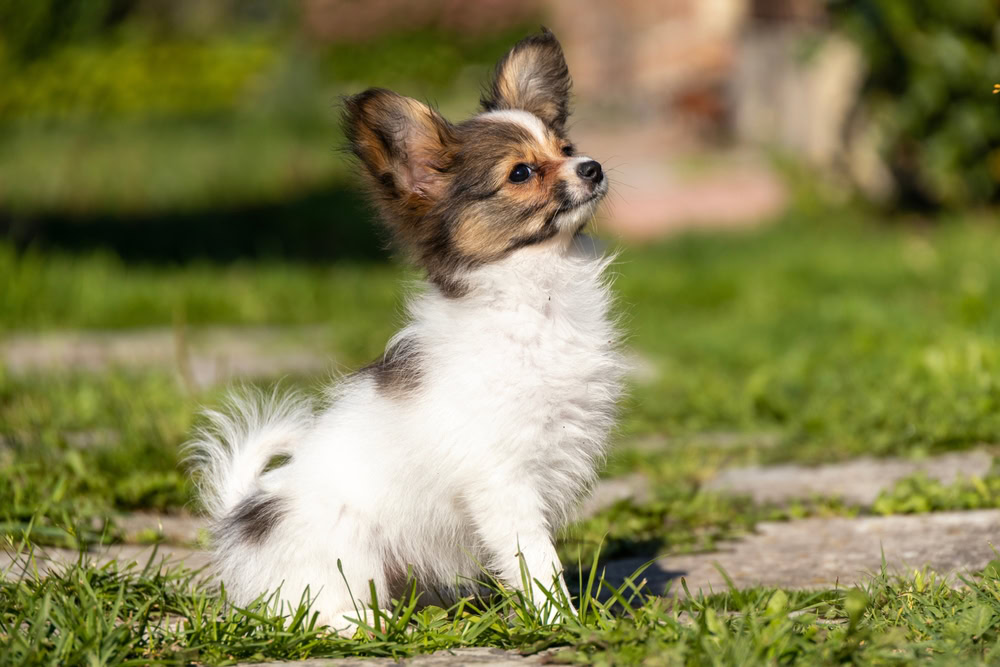

Final Thoughts
If you’re looking for a tiny canine companion, and can’t make up your mind between the Chihuahua and Papillon, the Chion might just be the perfect solution! These little dogs are relatively healthy, long-lived, low-maintenance, and very loving. You may require patience when it comes to toilet training, but it’s hard to stay mad at those adorable faces. They may be tiny, but they love to run, chase, play and enjoy the world just as much as the big dogs.
Featured Image Credit: Alina Ziabrieva, Shutterstock
